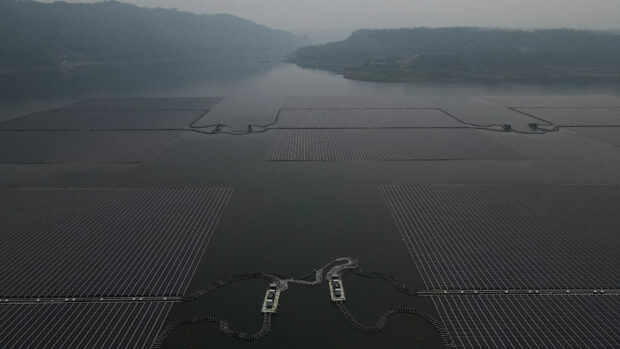
Solar panels of the 192 megawatt peak (MWp) floating solar power plant built on Cirata dam, that was developed by PLN Nusantara Power, a unit of Indonesia’s state utility company Perusahaan Listrik Negara (PLN) and United Arab Emirates renewable energy company Masdar, a unit of Mubadala Investment Co, in Purwakarta, West Java province, Indonesia, Nov 9, 2023. REUTERS/Willy Kurniawan/File photo
JAKARTA – Indonesia launched on Tuesday its investment plan to mobilize $20 billion in financing pledged by global lenders led by the United States and Japan to accelerate its power sector decarbonization and called for immediate fund disbursement.
Under Indonesia’s Just Energy Transition Partnership (JETP) the country seeks to cut carbon dioxide emissions to 250 million metric tons for its on-grid power sector by 2030, versus estimated business-as-usual emissions of over 350 million.
The investment proposal, known as Comprehensive Investment and Policy Plan (CIPP), was officially announced following a public consultation period after the draft was made public earlier this month.
Indonesia, one of the world’s biggest greenhouse gas emitters, plans to increase the portion of renewable energy in its power generation to 44 percent by 2030 from around 12 percent in 2022.
Energy mix
“We have to move quickly because 2030 is less than seven years away. The partnership must be enhanced and accelerated to do the priority projects, including to immediately realize the financing commitments,” Erick Thohir, ad-interim chief minister for investment affairs, said at the launch.
READ: U.S., Japan and partners mobilize $20B to move Indonesia away from coal power
The CIPP indicated investments worth $97.3 billion were needed to achieve the targets, including $66.9 billion for 400 projects which need to start by 2030 at the latest.
Michael Kleine, the U.S. charge d’affaires in Jakarta, said the JETP funding was expected to “jump start” energy transition investment and attract more financing.
Some environmentalists, however, were concerned about the large portion of commercial loans in the mix.
Half of the funds pledged would come from private financing, which could be commercial loans carrying market rates, equity investment or other debt instruments.
“What is the point of waiting for the JETP CIPP document to be released when the deal with advanced countries is just business-as-usual loans?” said Bhima Yudhistira of think tank Center of Economic and Law Studies.
Indonesia’s JETP is the biggest of its kind, followed by Vietnam’s $15 billion scheme.